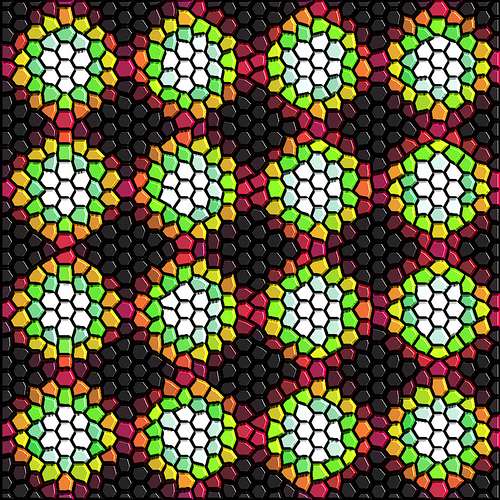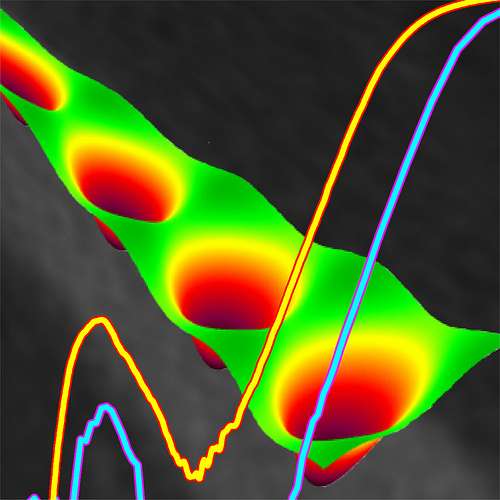Vortex pinning could lead to superconducting breakthroughs

A team of researchers from Russia, Spain, Belgium, the U.K. and the U.S. Department of Energy's (DOE) Argonne National Laboratory announced findings last week that may represent a breakthrough in applications of superconductivity.
The team discovered a way to efficiently stabilize tiny magnetic vortices that interfere with superconductivity—a problem that has plagued scientists trying to engineer real-world applications for decades. The discovery could remove one of the most significant roadblocks to advances in superconductor technology.
Superconductors are extremely useful materials, given that modern society involves moving a lot of electricity around. Each time we do it, whether it be along the cord from the outlet to your lamp or in the millions of miles of power lines strung across the country, we lose a little bit of electricity. That effect is due to resistance in the wires we currently use to transport electricity. Even a pretty good conductor, like copper wire, loses some electricity due to resistance.
But in an ideal superconductor, no electricity is ever lost. If you set up a loop of perfect superconducting wire and added some current, it would circle that loop forever. Superconductors are the secret behind MRI machines, Maglev trains and improved cell phone reception.
The problem is that superconductors have to be cooled to do their thing. Even the "high-temperature" superconductors already discovered have to be chilled to -280° Fahrenheit. That creates a lot of engineering and logistical problems.
In the long run, scientists are hoping to develop superconducting materials that would operate closer to room temperature. That would be a major achievement—though it is generally still thought to be a long way off.

In the meantime, there remain key problems of superconductivity that need to be solved even in the low-temperature environment.
One such major problem is posed by magnetic fields. When magnetic fields reach a certain strength, they cause a superconductor to lose its superconductivity. But there is a type of superconductor—known as "Type II"—which is better at surviving in relatively high magnetic fields. In these superconductors, magnetic fields create tiny whirlpools or "vortices." Superconducting current continues to travel around these vortices to a point, but eventually, as the magnetic field strengthens, the vortices begin to move about and interfere with the material's superconductivity, introducing resistance.
"These vortices dissipate the energy when moving under applied currents and bury all hopes for a technological revolution—unless we find ways to efficiently pin them," said Argonne Distinguished Fellow Valerii Vinokur, who co-authored the study.
Scientists have spent a lot of time and effort over the past few decades trying to immobilize these vortices, but until now, the results have been mixed. They found ways to pin down the vortices, but these only worked in a restricted range of low temperatures and magnetic fields.
Vinokur and his colleagues, however, discovered a surprise. They began with very thin superconducting wires—just 50 nanometers in diameter. (A stack of 2,000 of these wires would equal the height of a sheet of paper.) These thin wires can accommodate only one row of vortices. When they applied a high magnetic field, the vortices crowded together in long clusters and stopped moving. Increasing the magnetic field restored the material's superconductivity, instead of destroying it.
Next, the team carved superconducting film into an array of holes so that only a few vortices could squeeze between the holes, where they stayed, unable to interfere with current.
The resistance of the superconductor dropped dramatically—at temperatures and magnetic fields where no one has been able to pin vortices before. "The results were quite striking," Vinokur said.
The team has only experimented with low-temperature superconductors so far, Vinokur said, "but there is no reason why the approach we used should be restricted to just low-temperature superconductors."
The paper, "Magnetic field-induced dissipation-free state in superconducting nanostructures," is published this week in Nature Communications.
More information: www.nature.com/ncomms/journal/ … full/ncomms2437.html
Journal information: Nature Communications
Provided by Argonne National Laboratory



















